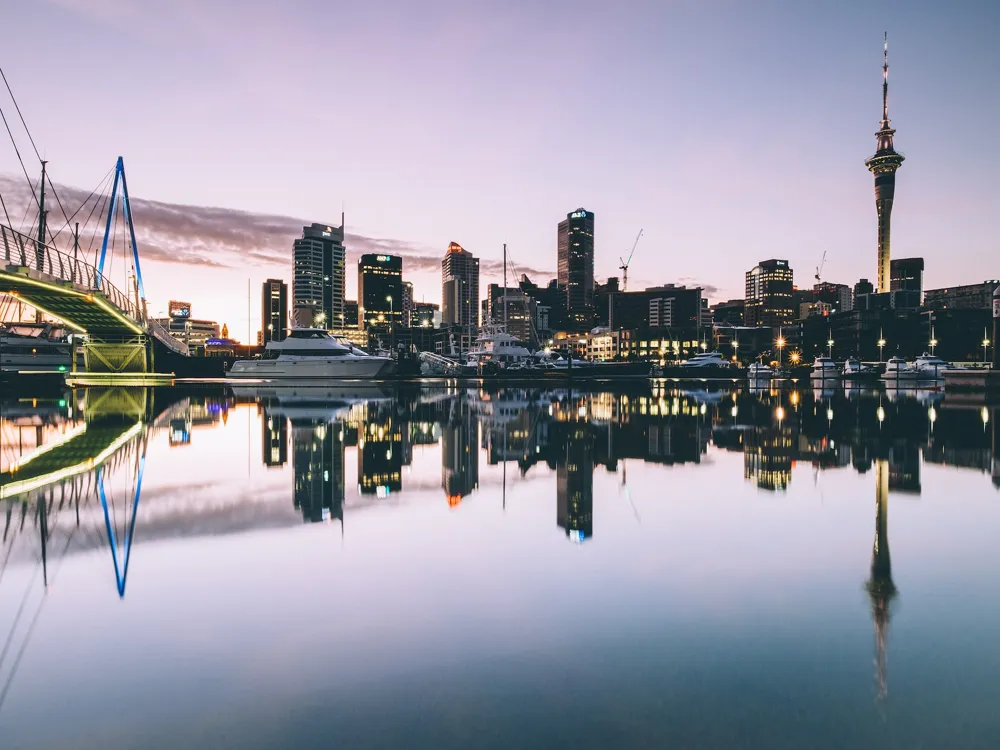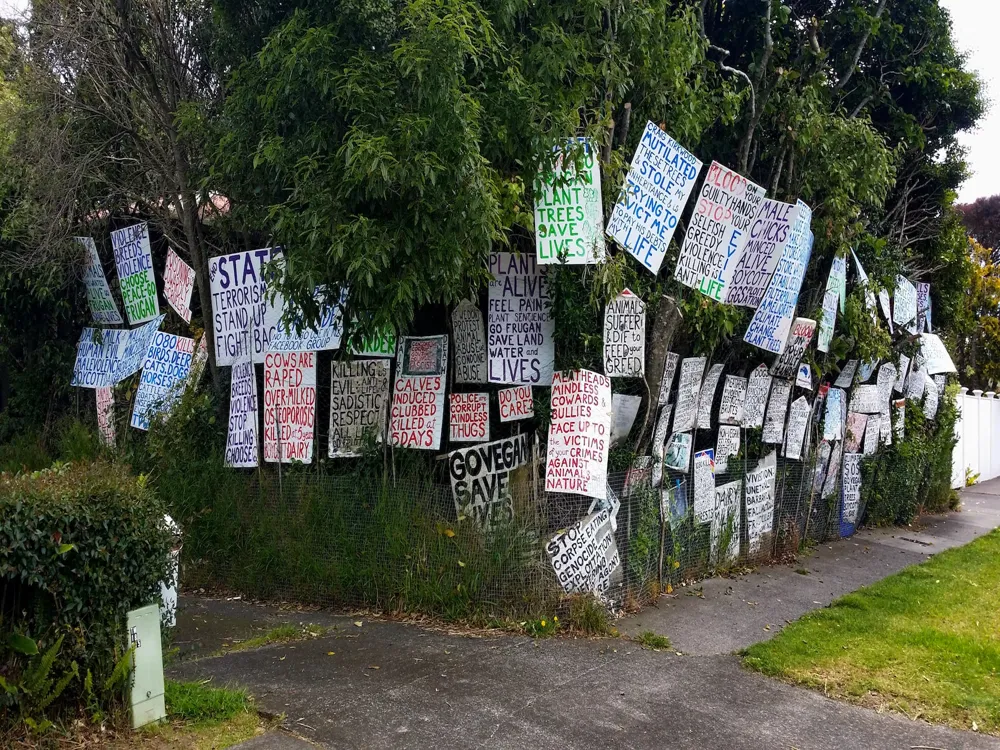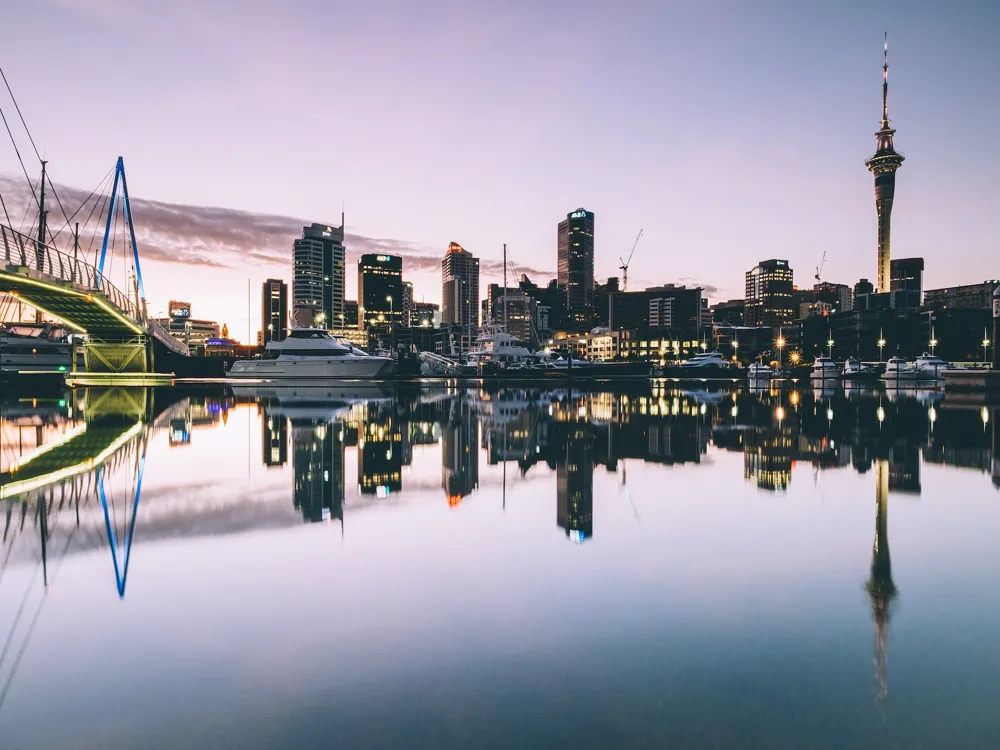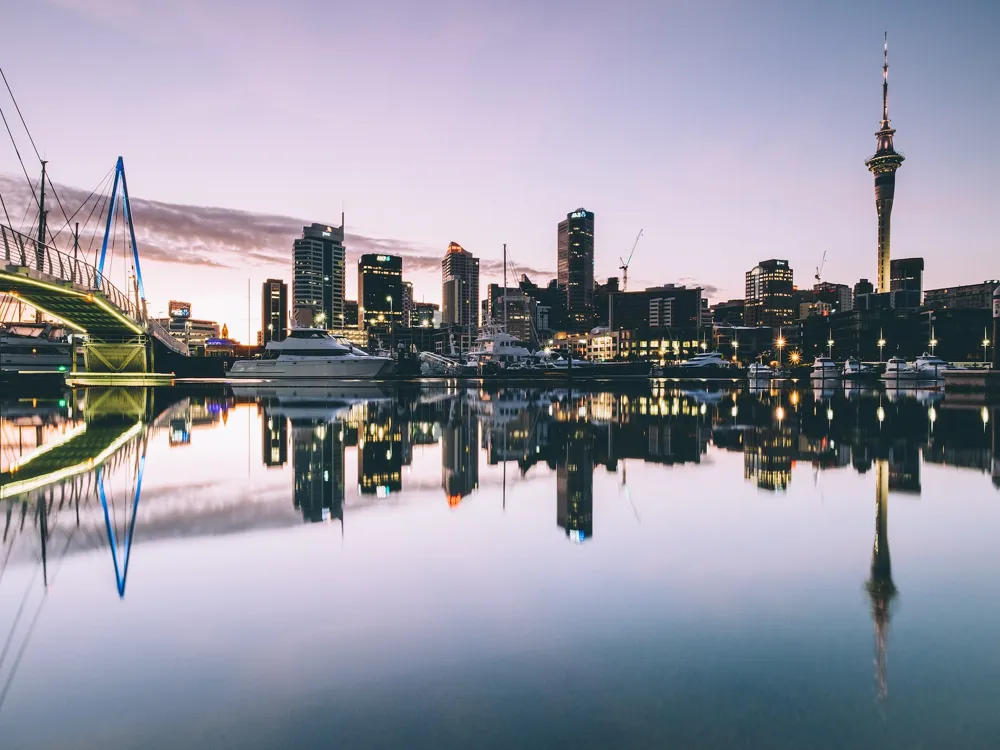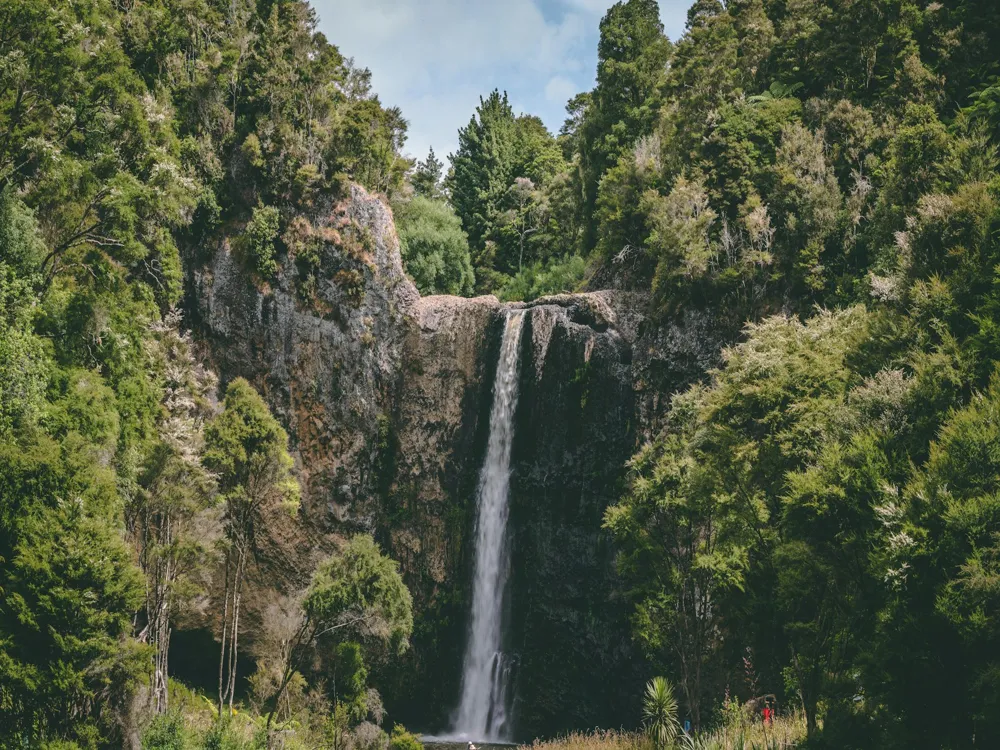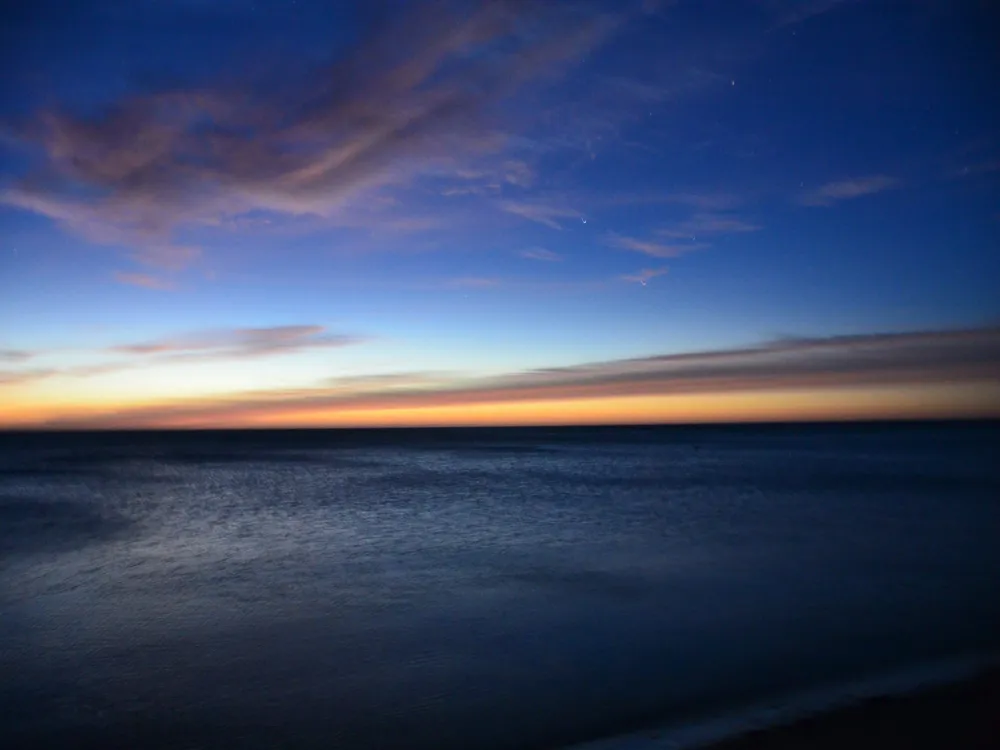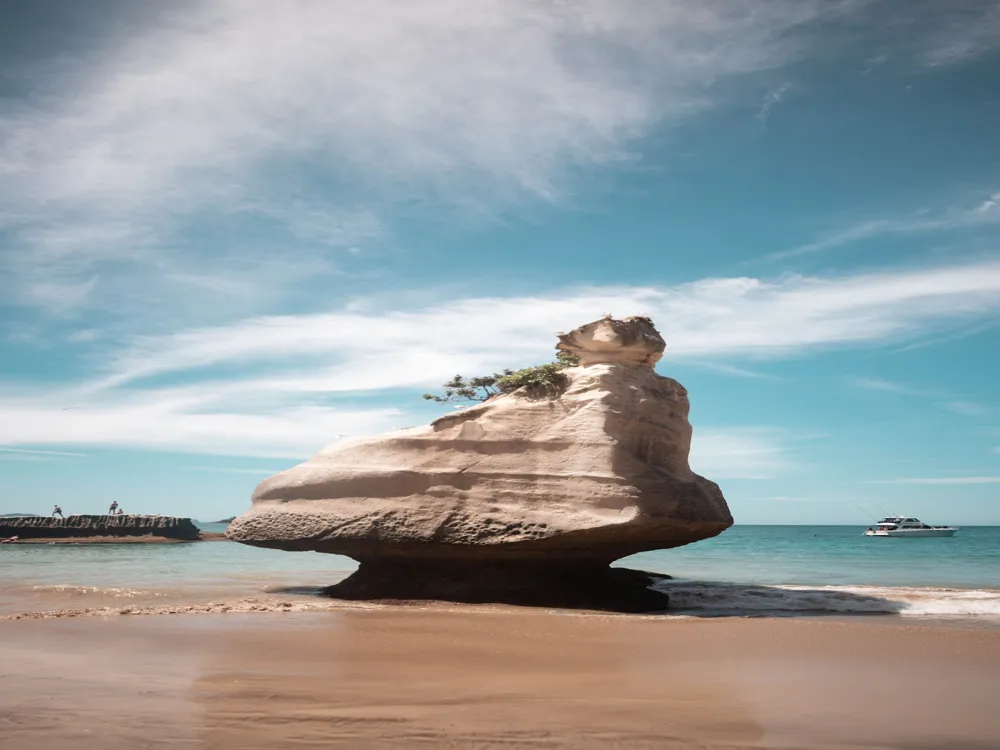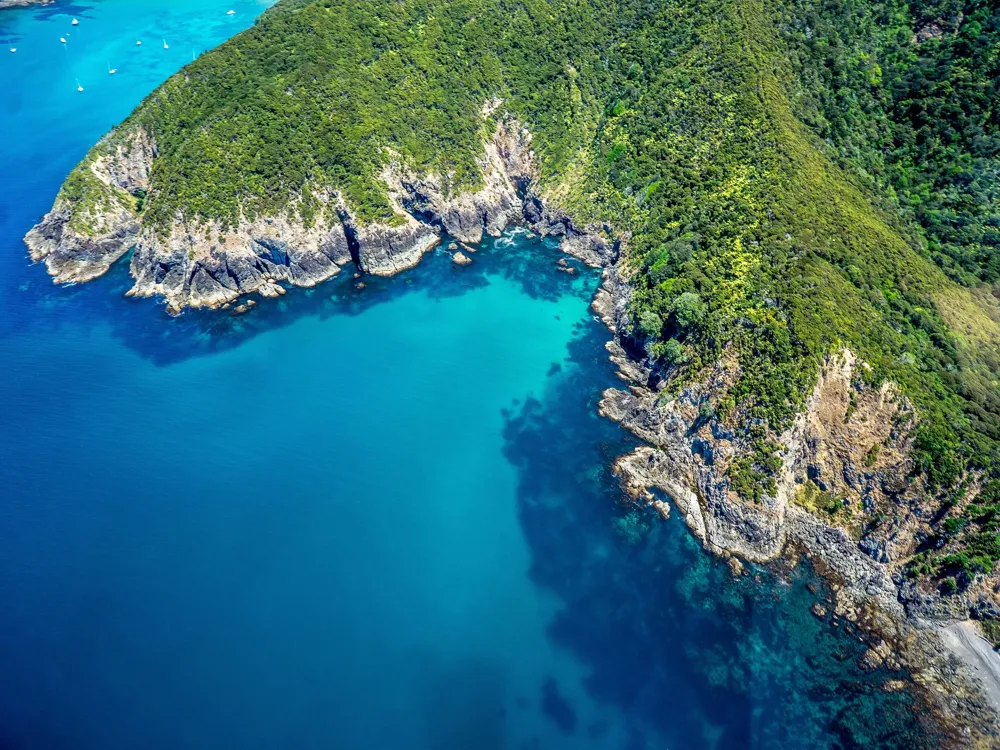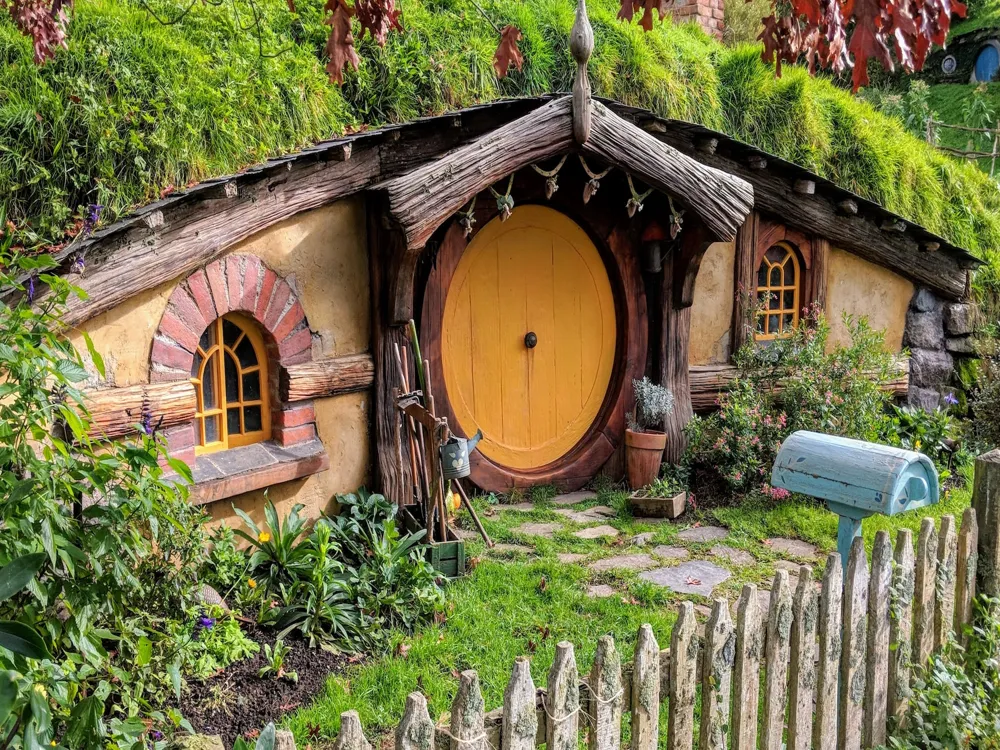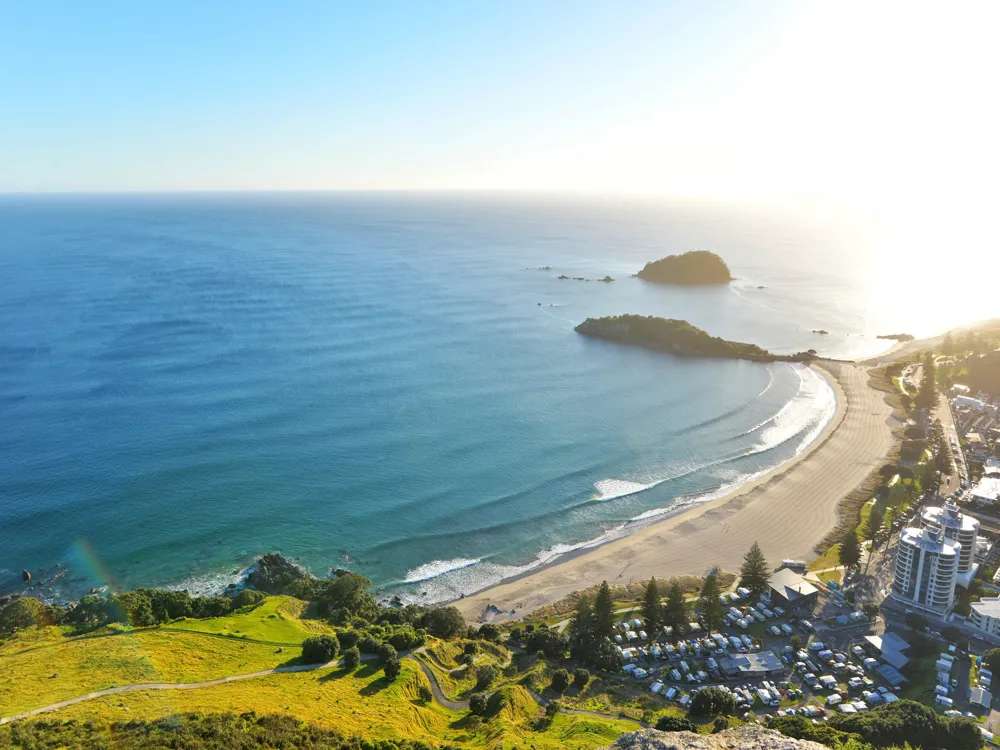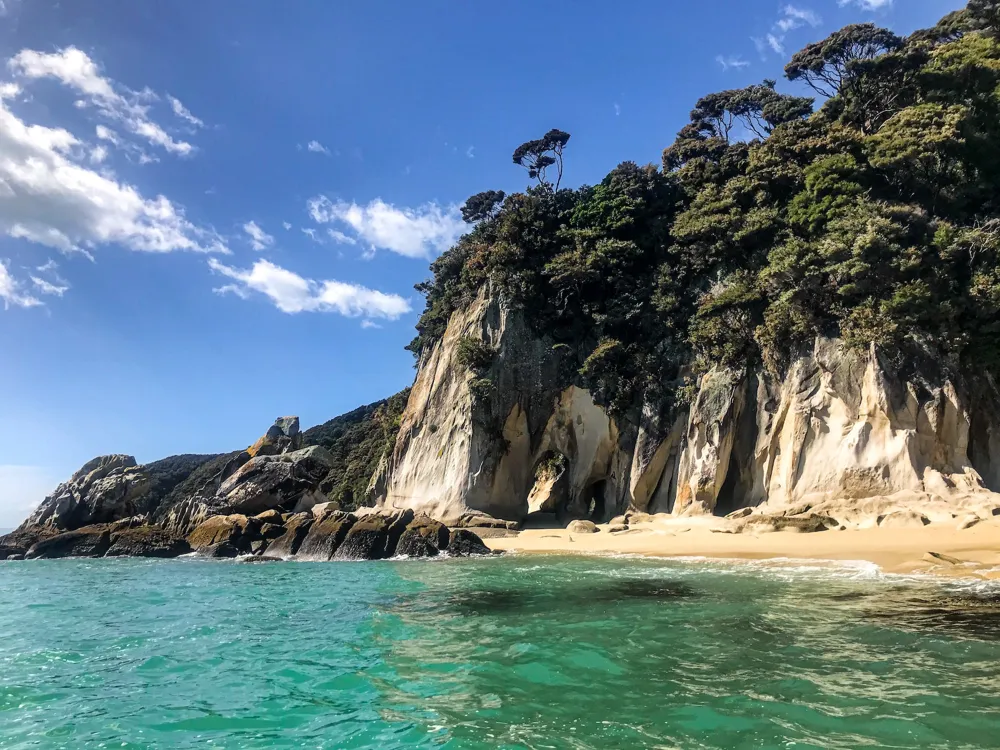Auckland, known as the 'City of Sails,' is a vibrant metropolis and the largest city in New Zealand. It is nestled between two major harbors - the Waitemata and the Manukau - and is renowned for its stunning natural beauty, diverse cultures, and dynamic urban environment. Auckland is a city where modern skyscrapers intermingle with historic buildings, offering a unique blend of the old and the new. It's a hub of commerce, culture, and cuisine, attracting millions of visitors each year. The city's geography is characterized by volcanic hills, the twin harbors, numerous islands in the Hauraki Gulf, and scenic beaches. This geographical diversity offers a wide range of activities from hiking and island-hopping to beachgoing and sailing. Auckland's rich cultural tapestry is reflected in its vibrant culinary scene, arts, and festivals. With a population comprising a mix of indigenous Maori, European settlers, and more recent Asian and Pacific Islander immigrants, Auckland is a melting pot of traditions and cultures. Auckland's central business district (CBD) is the pulsating heart of the city. It's a bustling area of commerce, but it also offers a wealth of attractions, including the iconic Sky Tower, art galleries, and museums. The CBD is known for its diverse range of shopping, from high-end boutiques to local artisan markets, making it a shopper's paradise. Auckland is not just about urban charm; it's also home to lush green spaces and expansive parks. The Auckland Domain, the city's oldest park, is a haven of tranquility and hosts the Auckland War Memorial Museum. Other notable green spaces include One Tree Hill, Mt Eden, and the picturesque Auckland Botanical Gardens, each offering a unique experience of Auckland's natural beauty. The city's culinary scene is as diverse as its population, offering everything from traditional Maori hangi to modern Pacific Rim cuisine. Auckland's nightlife buzzes with energy, featuring a variety of bars, nightclubs, and live music venues, catering to all tastes and preferences. Auckland's architecture is a fascinating blend of historical and contemporary styles. The cityscape ranges from traditional Maori and colonial-era structures to modernist skyscrapers and cutting-edge designs. This diversity in architectural styles reflects Auckland's growth and evolution over the years. The early architectural landscape of Auckland was dominated by Maori structures, including marae (meeting houses) and wharenui (large houses), which are still an integral part of the city's cultural heritage. With European colonization, Victorian and Edwardian buildings emerged, many of which still stand today, especially in areas like Parnell and Ponsonby. Post-World War II, Auckland witnessed a surge in modernist architecture. The Sky Tower, a defining feature of Auckland's skyline, exemplifies this modernist trend. Other notable contemporary structures include the Auckland Art Gallery Toi o Tāmaki, the Britomart Transport Centre, and the Viaduct Harbour development, which showcase innovative design and sustainability principles. A key aspect of Auckland's architectural identity is the effort to preserve historical buildings while integrating them with modern developments. This blend of the old and the new is evident in the refurbishment of older structures and their repurposing for contemporary use, adding unique character to the city's urban landscape. Recently, Auckland has been embracing green architecture, focusing on sustainable, energy-efficient designs. This approach is evident in several new developments that incorporate eco-friendly materials, green spaces, and energy-saving technologies, reflecting Auckland's commitment to sustainability. The best time to visit Auckland is during the summer months from December to February, when the weather is warm and sunny, perfect for outdoor activities. However, for those looking to avoid the crowds, the shoulder seasons of spring and autumn offer pleasant weather and fewer tourists. Auckland has an efficient public transport system, including buses, trains, and ferries, which are a great way to explore the city and its surroundings. For more flexibility, consider renting a car, especially if planning to visit areas outside the city. Respect for the local Maori culture is essential. Learning a few basic phrases in Maori can be appreciated. It's also important to be environmentally conscious, as New Zealanders value sustainability and nature conservation. Don't miss the opportunity to try local dishes, particularly seafood and traditional Maori cuisine. Auckland's diverse food scene also offers excellent international options, from Asian to European cuisines. Auckland is generally a safe city, but as with any major city, it's wise to stay alert and aware of your surroundings. Keep your belongings secure and avoid walking alone at night in less populated areas. Auckland is well-connected both internationally and domestically. The Auckland Airport is the largest and busiest in New Zealand, offering flights to and from numerous international and domestic destinations. For those traveling by sea, the Auckland ferry terminal provides services to various locations within the Hauraki Gulf. Additionally, an extensive network of roads and highways makes it convenient for visitors to travel to Auckland by car or bus from other parts of New Zealand.Overview of Auckland
The Heart of Auckland
Green Spaces and Urban Parks
Culinary Delights and Nightlife
Architecture of Auckland
Modern Architectural Marvels
Preservation and Integration
Green Architecture
Tips When Visiting Auckland
Best Time to Visit
Transportation Tips
Local Etiquette
Food and Dining
Safety Tips
How To Reach Auckland
Rainbow's End
Auckland
₹ 72,000 onwards
View auckland Packages
Weather :
Tags : Amusement & Theme Park
Timings : Monday - Friday: 10:00 AM - 4:00 PM
Saturday, Sunday, Public Holidays: 10:00 AM - 5:00 PM
Time Required : 3-4 hours
Entry Fee : Adults: NZD 59
Children: NZD 49
Planning a Trip? Ask Your Question
Auckland Travel Packages
View All Packages For Auckland
Top Hotel Collections for Auckland

Private Pool

Luxury Hotels

5-Star Hotels

Pet Friendly
Top Hotels Near Auckland
Other Top Ranking Places In Auckland
View All Places To Visit In auckland
View auckland Packages
Weather :
Tags : Amusement & Theme Park
Timings : Monday - Friday: 10:00 AM - 4:00 PM
Saturday, Sunday, Public Holidays: 10:00 AM - 5:00 PM
Time Required : 3-4 hours
Entry Fee : Adults: NZD 59
Children: NZD 49
Planning a Trip? Ask Your Question
Auckland Travel Packages
View All Packages For Auckland
Top Hotel Collections for Auckland

Private Pool

Luxury Hotels

5-Star Hotels

Pet Friendly







